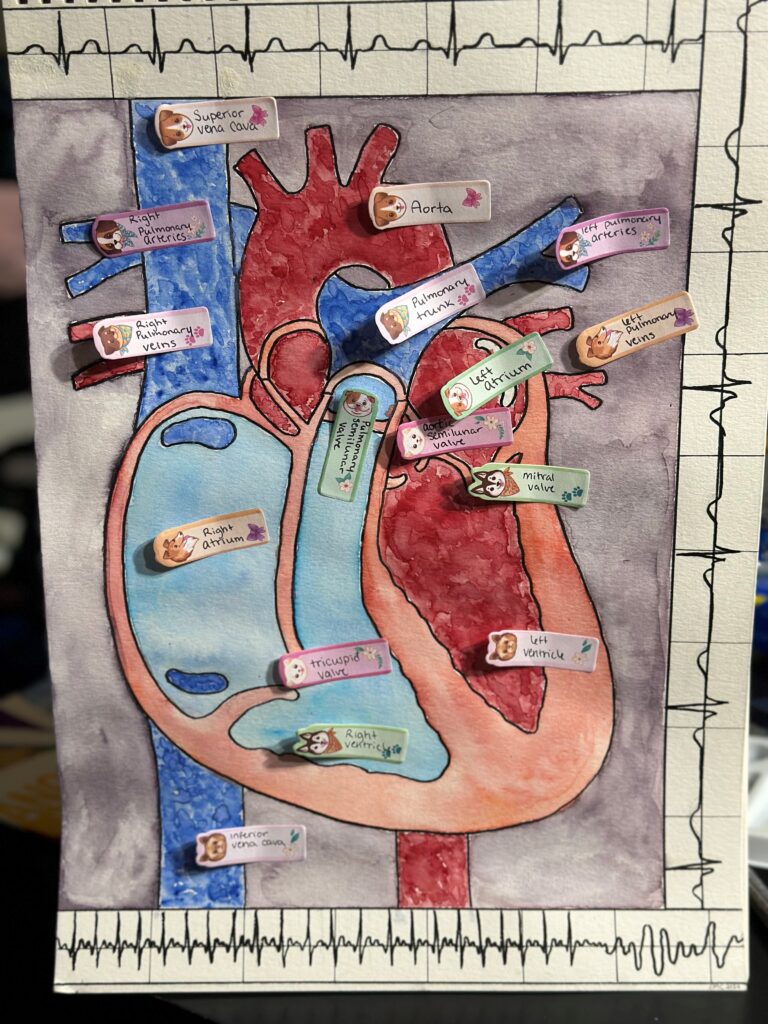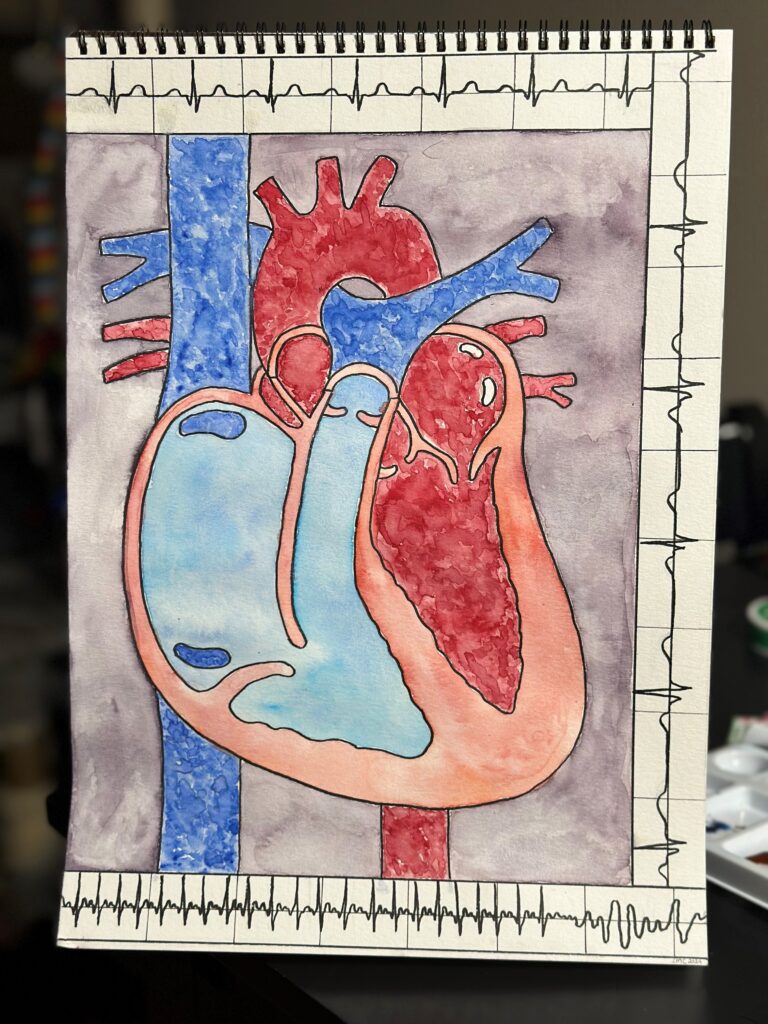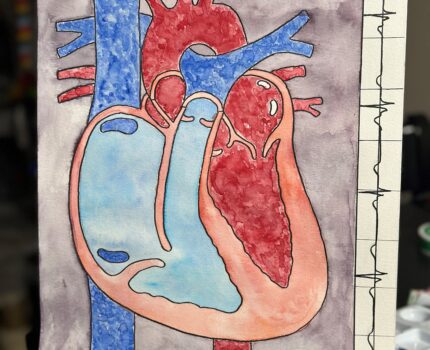For my STEAM project, I completed a painting of the anatomical structure of the heart and arrhythmias. I wanted to explore how blood is pumped through the heart and to the pulmonary and systemic circuits. Specifically, my objective is from Unit 11, ‘know the path of blood through the heart structures and circulatory system.’ My painting reflects the anatomy of the heart and a few basic arrhythmias the heart may experience.
As well as circulating blood throughout our body, the heart is responsible for controlling the rhythm and rate at which it beats. A normal sinus rhythm would be about 60 to 100 beats per minute. In a normal heart rhythm, electrical impulses are generated and spread in a coordinated fashion. An arrhythmia is an irregular heartbeat or rhythm that occurs when the electrical signals that coordinate the heart’s beats do not work properly. Arrhythmias can either cause a person to have bradycardia or tachycardia. Bradycardia causes the heart rate to beat too slowly at a rate of less than 60 beats per minute. Tachycardia causes the heart rate to beat too quickly and exceeds more than 100 beats per minute. Arrhythmias can vary in severity and may be caused by many different factors such as lifestyle choices, medications, drugs, and/or underlying illnesses. Arrhythmias are able to be detected by an electrocardiogram test. An electrocardiogram is able to determine normal and abnormal heart function by recording the electrical signals. Testing for arrhythmias is beneficial to determine the underlying cause to prevent further risk or harm of the heart. Such risks can affect the heart’s ability to pump sufficient amounts of blood to the systemic and pulmonary circuits.
The finished painting has corresponding anatomical labeling. The dog heads on the labels correspond to the location of each anatomical structure.
Can you identify the three and a half arrhythmias? (Hint: The right border’s R wave is proximal to the heart painting and the Q and S waves are distal to the heart painting.)




Elena’s STEAM project showcases attention and detail by highlighting the structure and vital functions of the heart in the cardiovascular system through artwork. The focus is on how the heart controls blood flow throughout our body and shows the delivery processes, such as providing oxygen and nutrients while removing waste products. Through her artwork, Elena effectively shows and highlights how the connected network of arteries, veins, and capillaries that ensures optimal blood flow to every tissue and organ.
Elena’s project goes deeper into the anatomical features of the heart, providing a good understanding of its four chambers and their specialized functions in receiving, propelling, and distributing blood across both pulmonary and systemic circuits. Showing pathways of blood from its deoxygenated state in the systemic circuit to its oxygenated state in the pulmonary circuit, Elena has shown a detailed insight into the cardiovascular system.
Beyond its mechanical functions, Elena also explores the heart’s role as the pacemaker of the body, regulating its rhythm and pulse rate. By illustrating typical sinus rhythm and diverse arrhythmias, Elana shows the significance of preserving heart health as well as possible repercussions that could arise from irregular rhythms. In the project, it can be observed how important it is to detect and intervene in managing risks associated with these conditions at an early stage.
In conclusion, Elena’s project is educational for others and has given information on the workings of the heart but also the importance of proactive measures such as electrocardiogram examinations in preserving cardiovascular health. Through the use of art and insight, Elena offers a compelling perspective on the significance of cardiac wellness.